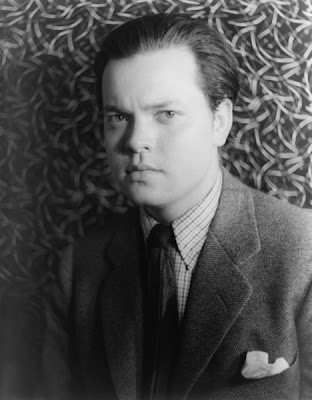"Voodoo"* Macbeth

In 1936 a 21-year old Orson Welles directed a stage version of Shakespeare's Macbeth. The cast was all-black, and the setting was Haiti, not Scotland. It was mounted with money from the Federal Theater Project, which had helped set up black theater projects throughout the country. He got paid $50 a week, much less than what he got in his job as radio announcer.
I'm going to borrow from the author and history professor Joshua Zeitz, who wrote an article about the production:
"The cast and crew of Harlem's Macbeth were a diverse assemblage of experienced and inexperienced characters whose convergence on the Lafayette Theatre only contributed to the considerable amount of rumor swirling around the production. For the troupe's choreographer, Welles chose a a Sierra Leonean percussion expert. Asodata Dafora Horton, who coordinated the drumming and chanting that accompanied the drama, performed by dancers from the west coast of Africa. Their leader was a genuine witch doctor named Abdul."
Ten thousand people thronged outside of the theater where brass bands played. The play earned mixed review (a writer for the New York Herald Tribune sighed a
 t the "inability of so melodious a race to sing the music of Shakespeare, while another called it "colorful, exciting and a good colored show. It's like Run Little Chillun with intervals of familiar quotations."
t the "inability of so melodious a race to sing the music of Shakespeare, while another called it "colorful, exciting and a good colored show. It's like Run Little Chillun with intervals of familiar quotations."Harlem's Amsterdam News noted, with tongue in cheek, that Park Avenue whites needed to be warned that the play is "purely for Harlem consumption and is geared and produced accordingly."
Black folks did love it, giving the opening night show a 15-minute standing ovation, while Orson Welles was dragged onto the stage. The show ran for 12 weeks in Manhattan, then traveled for another 144. One night during the tour the lead actor went AWOL, his understudy fell ill, and Orson Welles played the part in blackface. Thankfully, we don't have that on film, but when I googled the play the other day while looking for a detail, I found the most wonderful thing. Movietone News, which produced those newsreels that played in between films, showed up and captured four full minutes of the play. A filmmaker named Tom Sutpen put it on Youtube for all to enjoy.
Images: Orson Welles in 1937 by Carl Van Vechten; A sketch and fabric swatches for a costume courtesy the Federal Theatre Project Collection, Library of Congress
*The folks back in 1936 chose this spelling. I prefer to use Vodou when speaking of the religion.


Comments